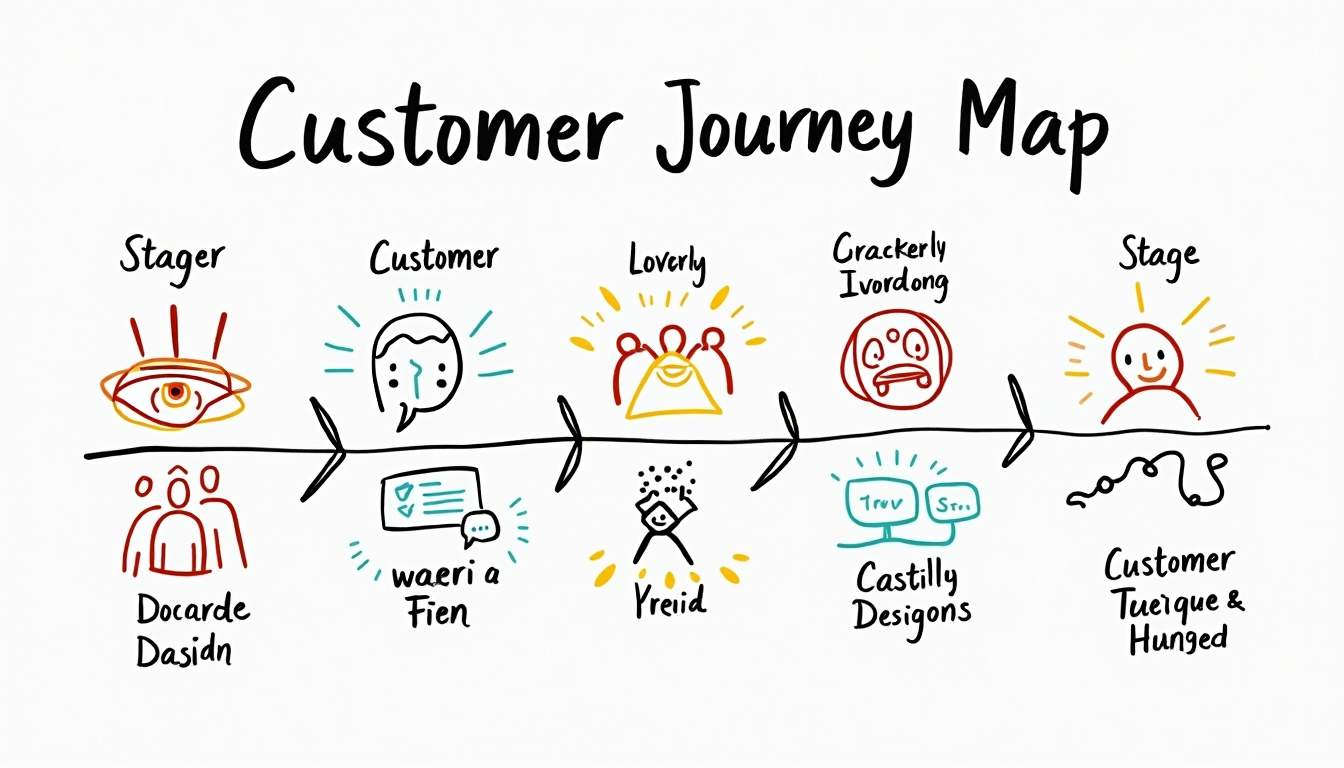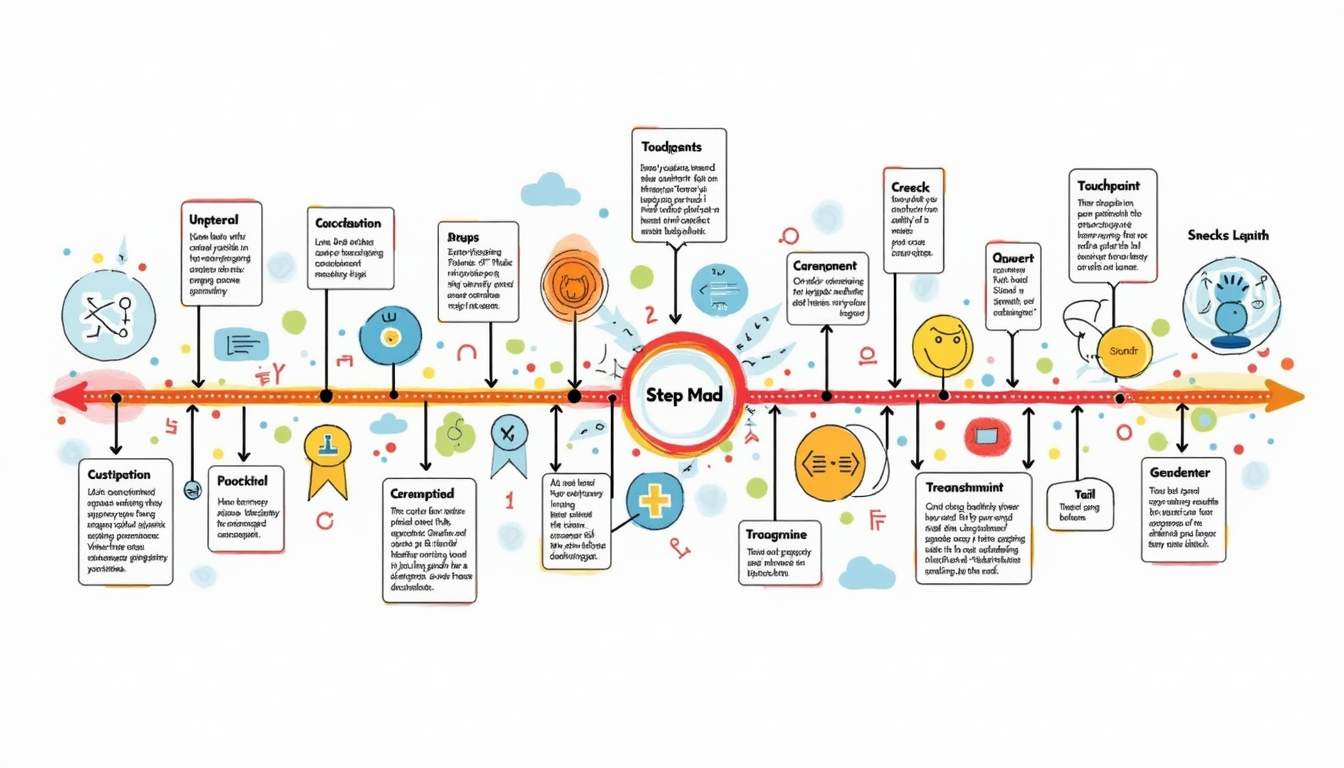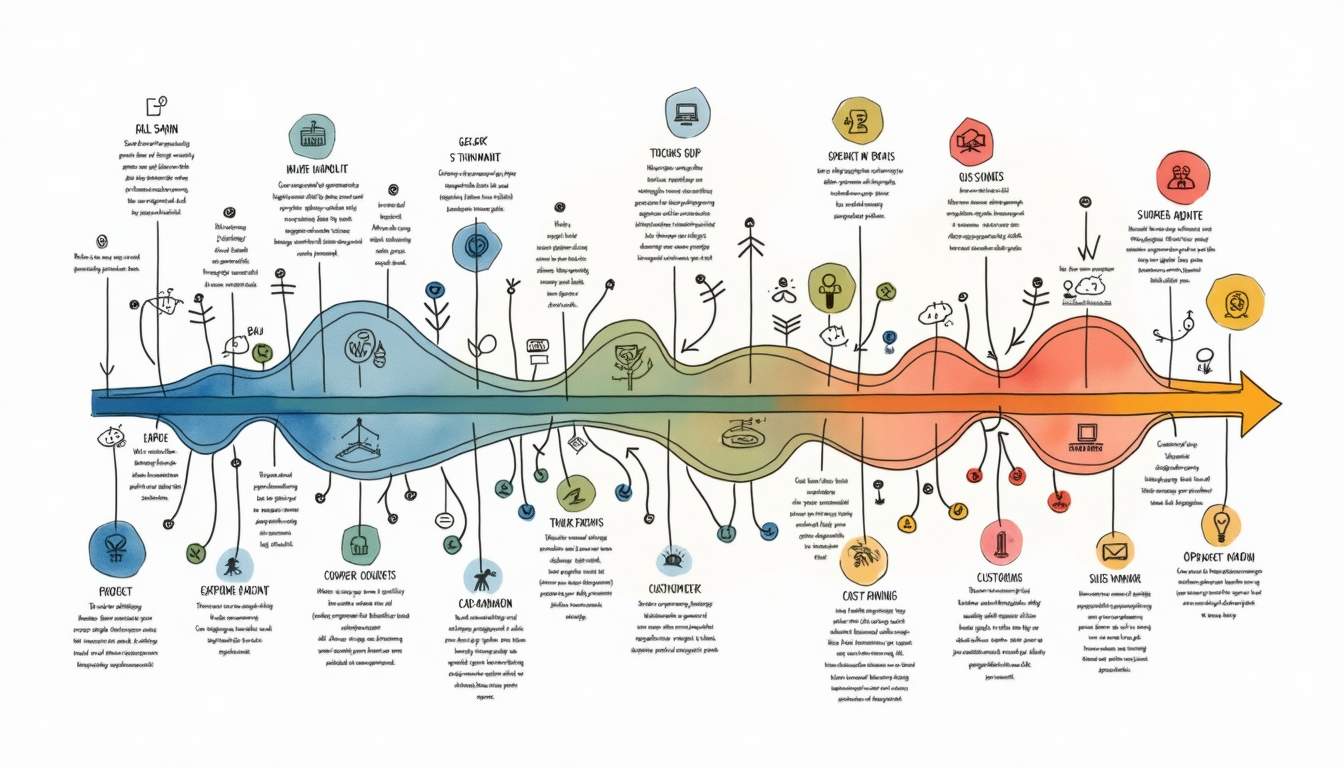Understanding Customer Journey Maps: A Comprehensive Example
Customer journey mapping is more than just a buzzword; it’s a critical tool for businesses aiming to enhance customer experience and drive growth. With 65% of companies already engaging in journey mapping, it’s clear that this practice is becoming a fundamental requirement for competitive advantage. But what does a customer journey map look like in practice? Let’s dive into the details.
What is a Customer Journey Map?
At its core, a customer journey map is a visual representation of the process a customer goes through when interacting with a company. It outlines every touchpoint, from the first encounter to post-purchase follow-ups. This map serves as a compass, guiding businesses through the complexities of customer interactions.

The Importance of Mapping
Mapping the customer journey is vital for identifying pain points and opportunities for improvement. However, many organizations struggle to leverage these maps effectively. A Gartner study revealed that 83% of customer experience professionals find it challenging to use journey maps to advance their CX improvement efforts. This disconnect can lead to missed opportunities for growth.
Key Components of a Customer Journey Map
When creating a customer journey map, several key components should be included:
- Customer Personas: Understanding who your customers are is crucial. Create detailed personas that represent your target audience.
- Touchpoints: Identify all the points of interaction between the customer and your brand, whether online or offline.
- Emotions: Map out the emotional journey of the customer at each touchpoint. This helps in understanding their feelings and motivations.
- Channels: Specify the channels through which customers interact with your brand, such as social media, email, or in-store visits.
- Opportunities: Highlight areas for improvement or innovation that can enhance the customer experience.
Creating a Customer Journey Map: A Step-by-Step Example
Let’s walk through a practical example of creating a customer journey map for an online retail store. This example will illustrate how to effectively visualize the customer experience.

Step 1: Define Your Customer Persona
Start by defining your customer persona. For our example, let’s consider “Sarah,” a 30-year-old working professional who values convenience and quality. Understanding her needs and preferences will guide the mapping process.
Step 2: Identify Key Touchpoints
Next, identify the key touchpoints in Sarah’s journey:
- Awareness: Sarah discovers the online store through social media ads.
- Consideration: She visits the website to browse products.
- Purchase: After adding items to her cart, she completes the purchase.
- Post-Purchase: Sarah receives a confirmation email and tracking information.
- Feedback: She is prompted to leave a review after receiving her order.
Step 3: Map Emotions and Pain Points
As you map out these touchpoints, consider Sarah’s emotions at each stage. For instance, she may feel excited when discovering the store but frustrated if the website is slow to load. Identifying these emotions helps pinpoint pain points that need addressing.
Step 4: Analyze and Optimize
Once the map is complete, analyze it for opportunities. Perhaps Sarah’s frustration with website speed can be mitigated by optimizing the site’s performance. This step is crucial; it transforms insights into actionable strategies.
Real-World Success: IKEA’s Journey Mapping
To illustrate the power of effective journey mapping, let’s look at IKEA. In 2024, they introduced Augmented Reality (AR) features on their app and website, resulting in a remarkable 20% increase in online sales. This success can be attributed to their understanding of customer needs and the seamless integration of technology into the shopping experience.

Lessons from IKEA
IKEA’s approach highlights several key lessons for businesses:
- Embrace Technology: Integrating innovative features can significantly enhance the customer experience.
- Listen to Feedback: Continuously gather and analyze customer feedback to refine the journey.
- Focus on Pain Points: Addressing customer frustrations can lead to increased satisfaction and loyalty.
The Future of Customer Journey Mapping
As we look ahead, the customer journey analytics market is projected to reach USD 48.40 billion by 2030, growing at an impressive 18.32% CAGR. This growth underscores the increasing importance of understanding customer journeys in a data-driven world.
Regulatory Considerations
With the introduction of new data protection regulations in 2024, businesses must navigate the complexities of collecting and processing consumer data. Adapting to these changes is essential for effective customer journey analytics.
Conclusion: Transforming Insights into Action
Customer journey mapping is not just about identifying problems; it’s about transforming those problems into opportunities for growth. By understanding the customer experience in depth, businesses can create strategies that not only meet but exceed customer expectations. As the landscape continues to evolve, those who master the art of journey mapping will undoubtedly lead the way in customer experience innovation.
